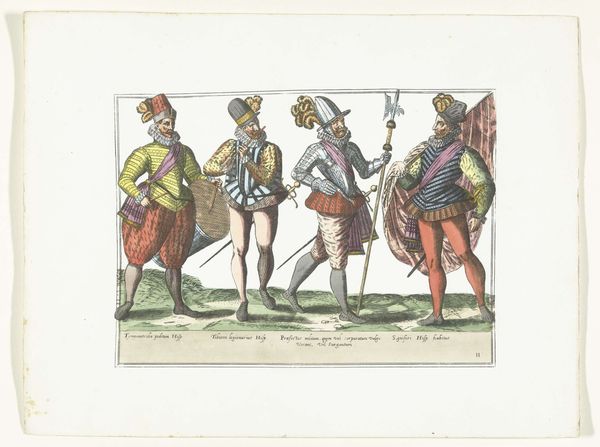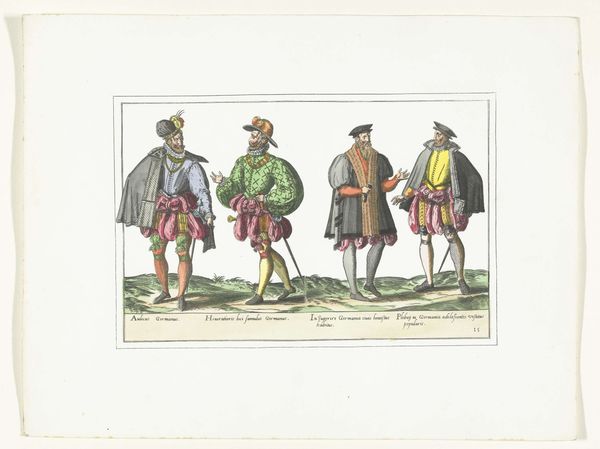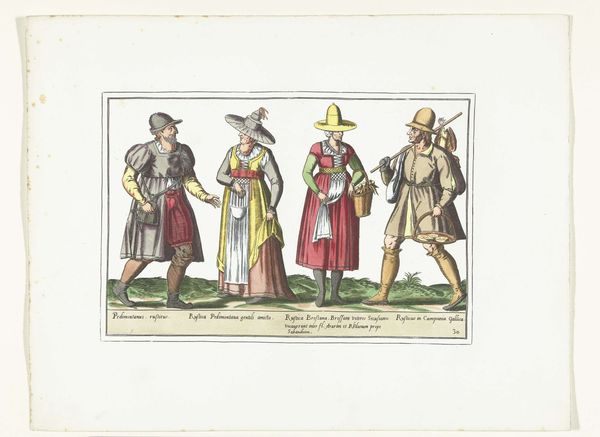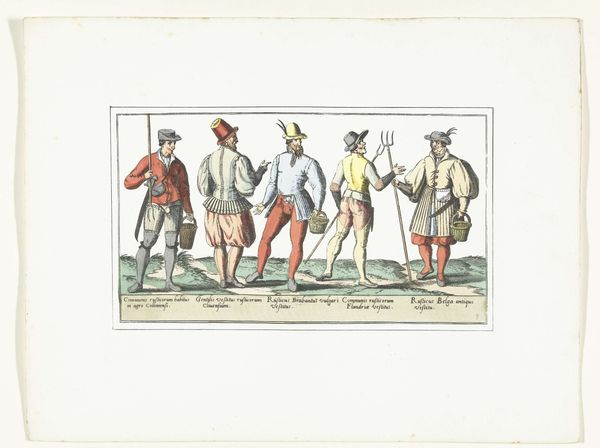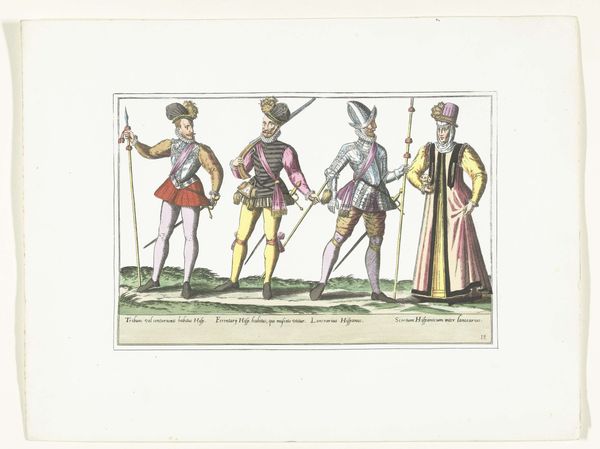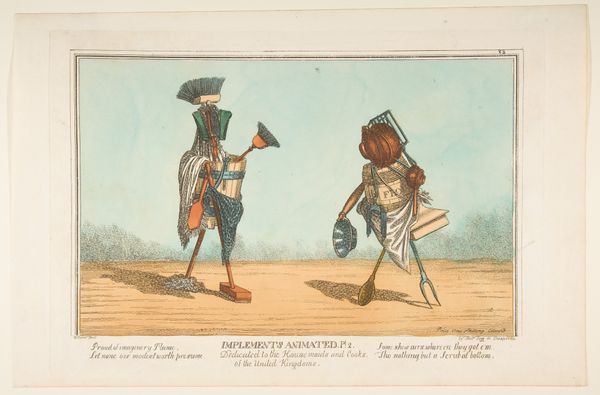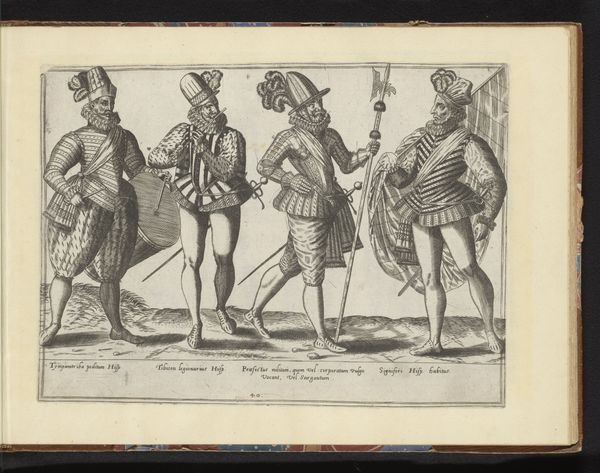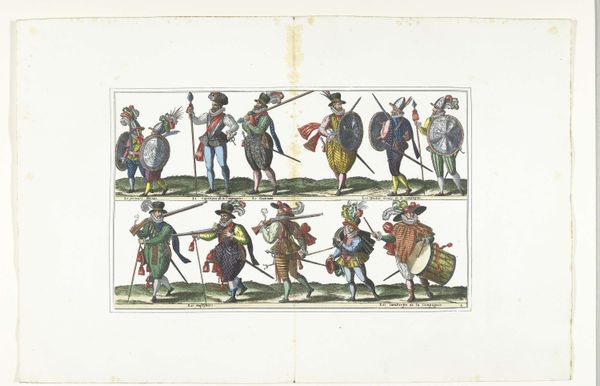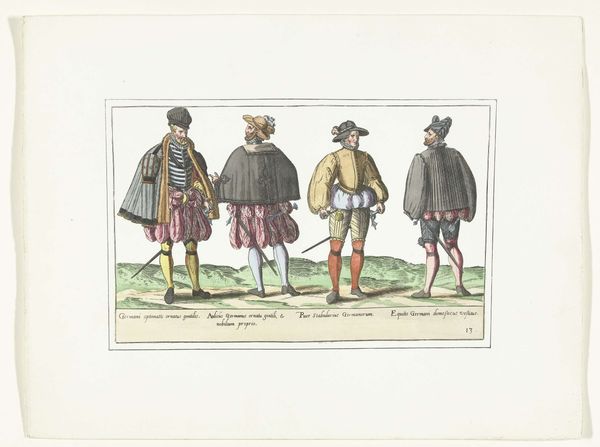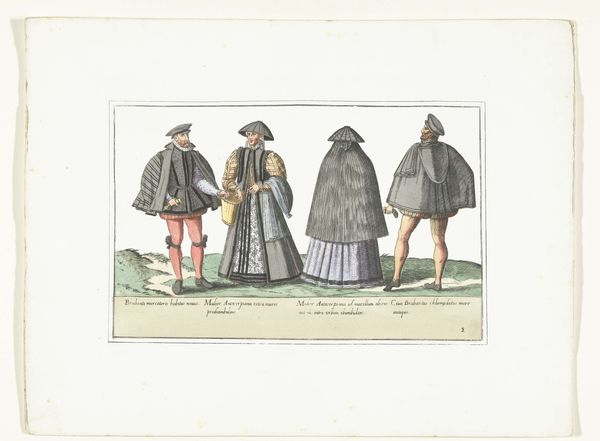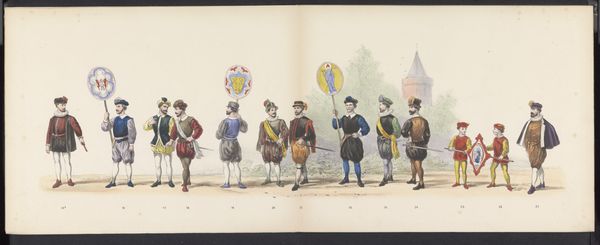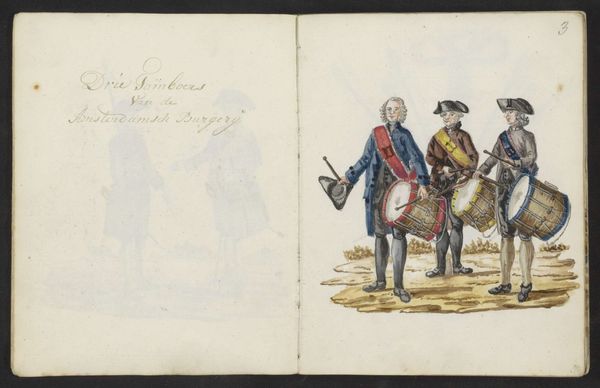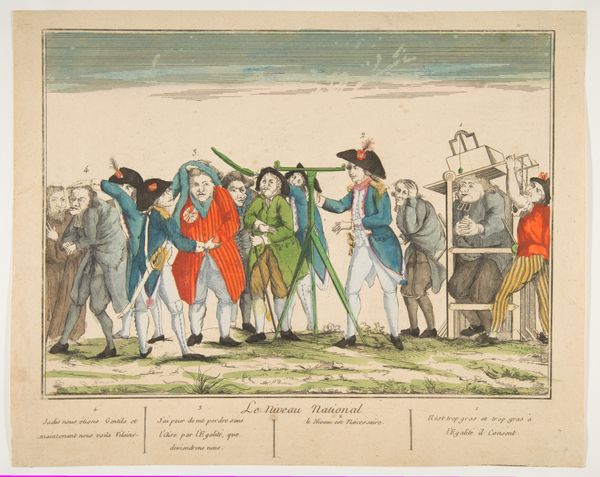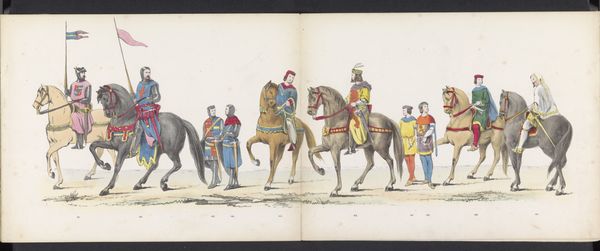
Vier militairen in uniformen volgens de mode in de Nederlanden en Engeland, ca. 1580 1872 - 1875
0:00
0:00
drawing, print, etching
#
drawing
# print
#
etching
#
figuration
#
11_renaissance
#
watercolour illustration
#
history-painting
#
watercolor
Dimensions: height 274 mm, width 360 mm
Copyright: Rijks Museum: Open Domain
Curator: This work, dating from around 1872-1875, presents “Four Military Men in Uniforms According to the Fashion in the Netherlands and England, ca. 1580.” Though its creator is unknown, it resides here at the Rijksmuseum as an etching, a drawing, and a print. Editor: Well, my first impression is “orderly parade.” I love how the costumes –sorry, uniforms – are lined up like butterflies in a collection, showing off their subtle differences in cut and color. But there’s something…clinical about it, wouldn't you say? Curator: Perhaps, but remember the power these images held! Fashion, even in military dress, expressed allegiances and aspirations. These prints would circulate, standardizing, mythologizing... creating visual order from messy political realities. Think of them as propaganda in polite society’s clothing. Editor: Propaganda through…poufy pants? I'm struck by the sheer impracticality of some of these garments! I imagine the fellow on the left, weighed down by all that clanking metal, tripping on the battlefield! It’s…theatrical, rather than effective. Curator: It is theater, in a sense. These men represent ideals: fortitude, patriotism, refinement. The clothes speak to that, even at the expense of practicality. Consider how social identities get forged – even violently – through outward presentation, by carefully curating, so to speak, our wardrobes and weapons. Editor: True. But I wonder how accurate it even is! Did these soldiers *actually* dress this way? Or is it an idealized fantasy concocted much later? There's a touch of the fairytale, a "once upon a time, there was a dashing army…" element to it. It’s costume design as cultural aspiration! Curator: The uniforms are representations of reality, definitely heightened. It is very evocative and it transports the viewer. And those shades—they are the sweet hues that the painter must have selected. It has a feel of history, the artist might have longed to connect, but did he even? It takes a lot of interpretation. Editor: And for me, looking at this image, makes you ask questions. What did "being a soldier" even *mean* back then? Where does the person end, and the performance begin? In the end, this illustration made me appreciate how images construct –and obscure–historical truth.
Comments
No comments
Be the first to comment and join the conversation on the ultimate creative platform.
